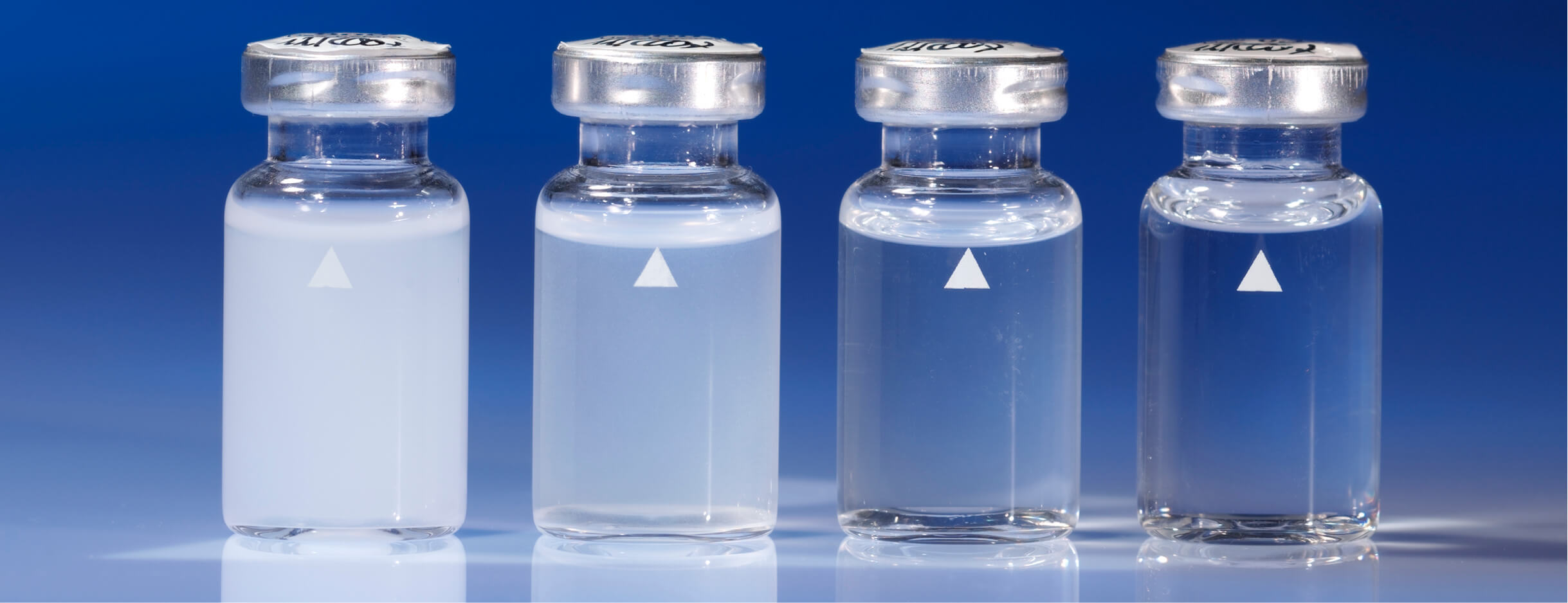Измеряйте образцы воды с непревзойденной точностью - независимо от того, имеют ли они низкие или высокие показатели мутности. То, что раньше было настоящей проблемой, решено нашими специалистами: Multipath 90° BLAC® охватывает уникальный диапазон мутности.
A turbidity value is a way of quantifying the cloudiness, or haziness of a sample. It is calculated, using an instrument called a turbidimeter, by measuring the amount of light scattered or blocked by suspended particles in a water sample. We often think of turbidity in terms of things like microorganisms, silt or other materials - but turbidity can literally anything present in the sample that causes the light beam to scatter. Turbidimeters are available as portable, benchtop or online instruments.
ISO and the US EPA are the two main organisations that govern the design critera of a turbidimeter and set specifications or even regulations for turbidity measurement. Compliance to one of these standards is regionally based.
In pool water, turbidity is an indication for the effectiveness of the filter system and cleaning agents. In drinking water it indicates the possible bacterial growth. In sewage treatment plants the turbidity is an indicator of quality in the cleaning procedures. In industries, turbidity is a quality criterion for products. The cause of turbidity is usually tiny small particles or droplets that do not dissolve in the surrounding liquids.
In pool water, turbidity is an indication for the effectiveness of the filter system and cleaning agents. In drinking water it indicates the possible bacterial growth.
If a light beam hits a liquid that is clouded by small, undissolved particles, part of the light is scattered to the side of the incoming beam. The phenomenon is called the Tyndall effect.
The scattering depends on the way the light hits the particle, but also on its shape.
A detector placed at 90° detects the scattering caused by the particles. The greater the scatter, the higher the turbidity value. Depending on the application or industry in which the device is used, additional scattered light detectors can be used at other angles.
When disinfecting surface water or water that is affected by surface water during treatment in waterworks, checking the turbidity is of crucial importance for choosing the optimum disinfection effiency. With the PTV 1000 series instruments, Lovibond® has developed on-line turbidimeters that successfully handles the usual problems in this area in practice. This has now been confirmed by a long-term test in the drinking water treatment of a Dutch waterworks.
Мониторинг индикаторного параметра мутности с предельным значением 1 NTU / FNU является одним из юридических обязательств оператора водопроводной станции и считается выполненным, если это значение поддерживается на выходе из водопроводной станции. Внутренние лаборатории обычно берут на себя эти задачи и сообщают результаты ответственному надзорному органу в соответствии с определенным планом отбора проб.
The Lovibond® PTV Series of Process Turbidimeters offers four different incident light sources. These different light sources were needed to meet regulatory requirements, which differ across the world. The PTV 1000 WL, PTV 2000 and PTV 6000 variations are approved by the USEPA under the Safe Drinking Water Act and are applicable for use in reporting filter effluent and combined filter effluent turbidities from drinking water plants. The PTV 1000 IR version complies with the ISO 7027 design criteria for turbidity measurement below 40 FNU3.
With respect to these three versions of turbidimeters, it is only the light source that differs. Although these four light sources are regulatory approved, they are expected to deliver slightly different results. These differences and their causes will be discussed.
